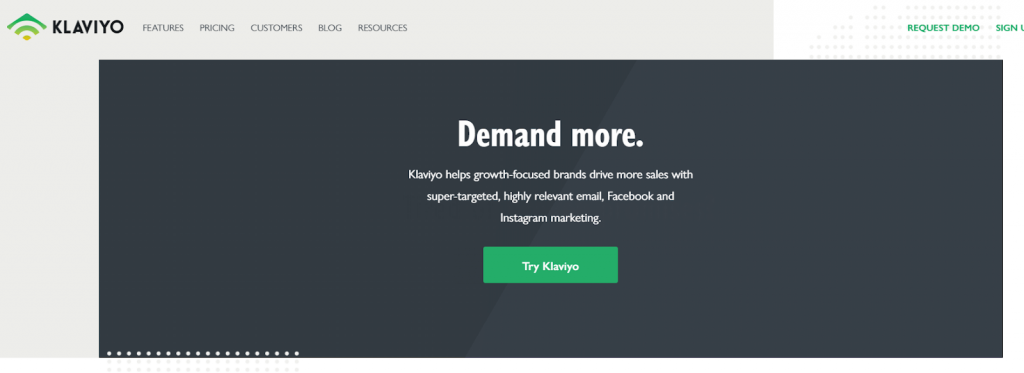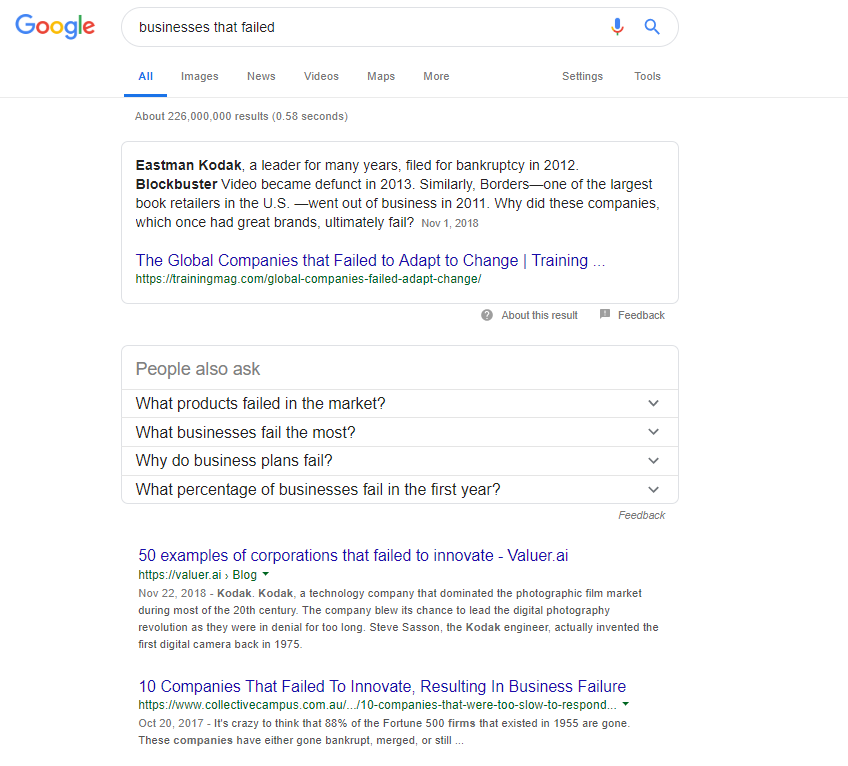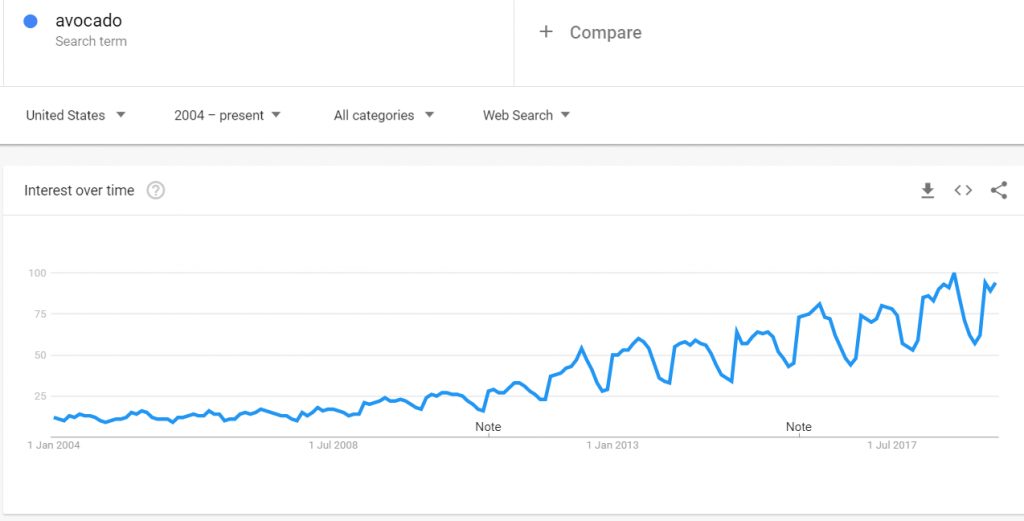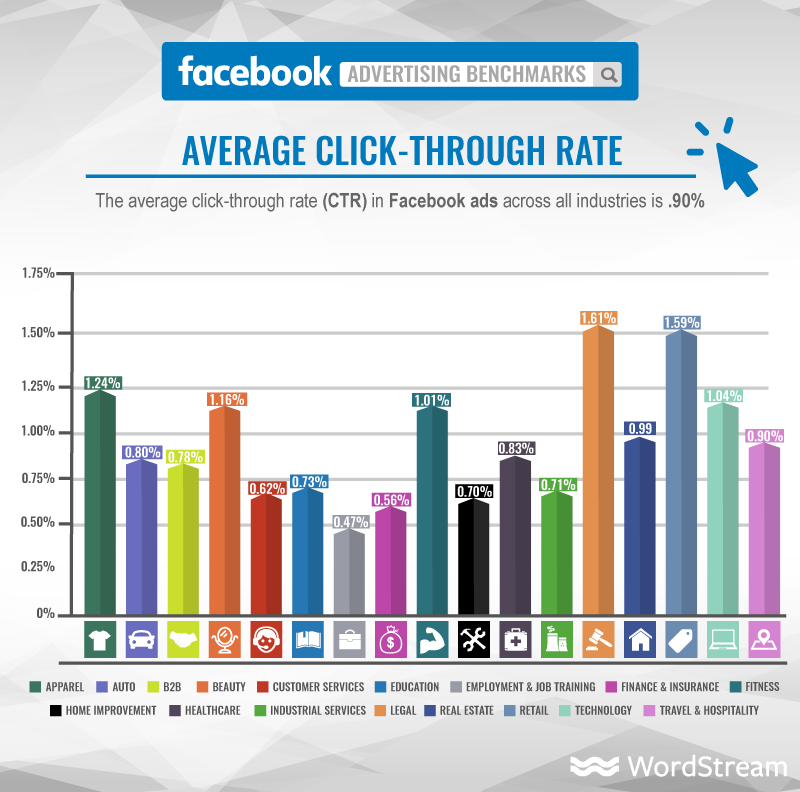How to Write a Killer Ecommerce Business Plan
If you’re thinking about writing a bulletproof ecommerce business plan, then that means only thing: you’re going ALL IN!

Whether you’re making the jump from employee to CEO or want to increase revenue of your existing ecommerce store, you’re going to need a framework in place for your ecommerce business plan.
The best business plans aren’t ones that predict how much money you’ll make in year one or how many new customers you acquire weekly; rather, they show you what to expect in the future, and if things aren’t going the way they should, why it’s happening and what you can do about it.
In this guide I’m going to show you how to write a business plan for an online ecommerce store in today’s current climate.
Why Do You Need a Business Plan?
The truth is that you don’t need an ecommerce business plan to start a business. But even if you’re launching a side hustle, it’s still worth mapping out some basic financials and goals, sort of an à la carte approach to this guide : )
Also ask yourself why you are running your side business. Are you looking to save up for a home deposit, a vacation, or for your children’s futures? This will give you the starting direction needed to take your hustle to the next level.
If, however, you do have bigger dreams like the chubby cat above, and do want to be your own boss, then YOU’RE GOING TO NEED AN ECOMMERCE BUSINESS PLAN.
You might be thinking, “Eugh, do I really need to write a bunch of stuff? I’d rather focus on my business.”
Yes, you do. Your business plan will be your third eye and will stop you becoming the next Blockbuster or Kodak (I’ll explain that later).
A tight business plan foresees potential threats lying ahead, opportunities to take advantage of, and strengths and weaknesses within your business.
If you plan to seek investment, investors aren’t going to hand you money without seeing your business plan first, no matter how great you think your business is.
An ecommerce business plan doesn’t need to be fancy or use complex business jargon; it’s a framework of who you are and where you want to go.
The Executive Summary
Every ecommerce business plan starts with an executive summary. The goal? To summarize the key points in your plan.
Sometimes it’s easier to write this last as you’ll be condensing your entire report into one or two pages. Your executive summary should include the following information:
- Information about your product or service
- Business model
- Aims and objectives
- Description of the market and your competitive edge
- Marketing strategy
- Growth potential
- Funding requirements
- Owners
The executive summary is about getting the reader to buy into your business, so keep the language positive and strong. Instead of saying:
“We will try and break into the market” (weak, raises doubt, negative tone)
Rephrase it to:
“After breaking into the market we will then…” (strong, inspires growth, positive tone)
After writing your executive summary, pretend you’re an investor. Does your executive summary excite you and make you want to read the rest of the plan? If not, it means you need to work on it some more.
This will be your opening and, in most cases, your only chance to sell your concept. The rest of your ecommerce business plan is just backing up what you have said here.
Mission Statement
A mission statement details the aims and values of your company.
I didn’t understand the value of a mission statement until I worked in a business where every employee believed the company’s mission statement.
Companies in which every staff member believes in the mission statement tends to have a much better company culture, and employees are more motivated to reach the company’s goals and so the business does better.
I have also worked in businesses where nobody knew the mission statement and it was all about making as much money as possible for the owner. Turnover was much higher and I certainly spent more than my fair share playing Yahoo! Checkers when I should have been doing work. A well-positioned and communicated purpose can drive transformational team member performance.
A well-written mission statement doesn’t need to be longer than a sentence or two and instantly lets people know what you’re trying to do.
Here are a few mission statements from the world’s biggest companies:
Tesla – To accelerate the world’s transition to sustainable energy
Microsoft – To empower every person and every organization on the planet to achieve more
Nike – Bring inspiration and innovation to every athlete in the world
IKEA – To create a better everyday life for the many people
TED – Spread ideas
A mission statement is your WHY.
Why, out of everything in the world, did you choose this practical niche and product? What do you want to change in the world? This process is really important, so take time to reflect on why you are doing what you are doing and what you want out of it. And it’s never just the money. A handy way to get to the root of it is to ask yourself why/what will that change 3-5 times.
For example:
- You may start with, “Because I want to make more money.” What will that change?
- “I’ll have more financial freedom and security.” What will that change?
- “I’ll be able to spend more time doing what I love, like hanging with my friends and family.” What will that change?
- “I’ll make sure that I get to experience my kids growing up and not let my most meaningful friendships slip away.” What will that change?
- “I’ll live a happy and content life.”
That’s quite a different mindset from where we started! The reason this is SO important is that understanding your true values and motivations will dictate how you want to grow your business. For example, taking on certain types of capital may mean that investors have a controlling stake, which could rip away that freedom, or perhaps being cheap with employees could mean that they aren’t trustworthy, so things fall apart while you’re away.
You obviously shouldn’t include all those points in your business plan, but if you want to launch a business to have a positive impact on the world, to create amazing jobs, or even create amazing customer experiences, then make that front and center.
The end result should be snappy and a few sentences at most. Nailing it means that people will want to work for you and customers will want to tell all their friends about you because they too believe in your mission.
What Is Your Value Proposition?
If you don’t have a value proposition, you’ll quickly be out of business. The #1 reason why businesses fail is because their product had no market fit:

A good value proposition states what you do and the solutions your business provides to customers, in one concise sentence.
Understand that consumers buy solutions to problems they have – they don’t buy products.
I own a wallet because it’s the most convenient way to store my money and cards, not because I love wallets (but I do love cashmere scarves, in case you wanted to know more about me).
I own a car because I travel often and it’s the easiest way for me to get around. I don’t own a car because I love automobiles or engineering.
Having a clear value proposition makes marketing your business easy, and you know the exact problem you solve.
Here’s ecommerce email marketing service Klaviyo clearly mentioning their value proposition:

It’s clear that the service is for growing ecommerce businesses with an online presence.
Here’s PayPal:

Again, very clear. It helps businesses of all sizes to accept payments on their website using PayPal.
One of my favorite value propositions is Cocofloss, which is a US brand selling hygiene equipment. Their value proposition is:

They make a mundane and boring health routine into something people are looking forward to.
They have made flossing sexy!
If you don’t have a defined value proposition, then when it comes to crafting copy on your website and marketing materials, it won’t resonate with your audience.
Business Model
Next up is deciding on your business model. This can be summed up by asking yourself the following questions:
What are you selling? – Are you selling clothing, electronics, food, supplements, furniture, etc.?
How are you selling? – Will you use the traditional ecommerce approach of having an online store, or does it make more sense to offer a subscription service?
Who are you selling to? – Will you sell directly to the customer (B2C), only to businesses (B2B), or both?
Product sourcing – Do you manufacture the products yourself, buy them overseas, dropship them, or deal with wholesalers?
These are simple questions, but it’s easy to get lost in the noise.
Don’t kid yourself into thinking that consumers and businesses will buy your product because it’s the best thing on the market, or you can service all markets (subscription and traditional at once).
Thinking you can do it all will increase the cost of running your business, potentially dilute your marketing message as now there are several pain points you need to get across, and cause confusion.
If you genuinely think you can service the B2C and B2B markets, then create two business plans, as the way you market to and reach each sector will differ greatly.
If you’re bootstrapping or have limited funding, then start with the one that you think is easiest to penetrate and focus on that before expanding.
Understanding Your Market
The success or failure of your entire business will depend on how well you know your market at all times.
Knowing the history of your market 50 years ago, 10 years ago, and in the present day, and having an idea on where it will be in 12 months, 5 years, 10 years, and beyond, is your best chance to future-proof yourself from failure.
When searching for “businesses that failed” on Google, the first three searches returned results about businesses not being innovative or failing to adapt.

Kodak and Blockbuster went out of business because they failed to see where the market was going. Perhaps Blockbuster would be sitting where Netflix is right now if they decided to move their service to online streaming.
Both businesses failed to see where their markets were going and are no longer with us.
Doing market research will help you to decide on how to market your business, aid in finance projections for the coming years, and reveal opportunities you can exploit later down the line.
You can do market research in a number of ways.
Competitor Research
Locate all your competitors and compare how they do against your business.
It may be useful to create a spreadsheet in which you separate each one by:
- Name
- Website Address
- Price
- Value Proposition
- Product Features
- Channels of Marketing
I recommend that you buy an item from all your major competitors to see what their sales funnel looks like. Read each email they send, contact their customer service with a complaint to see how they respond, and look for things you’ve not thought of and things they are all doing badly that you can turn into an opportunity.
From their email marketing, you may find that they are using influencers, are focusing on specific marketing channels, or all have active blogs because a large part of sales arrives from SEO.
You may come to the conclusion that everyone in your industry offers low to mid-range products and there’s nobody targeting the luxury segment. These are gaps in the market that you can exploit.
A useful tool is to run some user research. Using a website like UserTesting.com, send the test subjects to your website, along with two competitors, and then ask “what is the difference between these companies.” You’ll get a very good sense from just five people 🙂
In-Direct Competitor Research
Don’t just research competitors; sometimes they may be doing everything wrong and there’s not much you can learn. This is common in smaller niches or new markets.
If you’re in this situation, research similar businesses in other parts of the world which offer a very similar service but due to geographical location, aren’t in direction competition with you.
For example, if you’re selling ladies gym equipment in Spain, you may only have a few competitors who you cannot learn too much from because they are small in size or at the start of their own journey.
You can also take a look to see what’s happening in other countries that are representative of the market you are shooting for.
Third-Party Tools
Services like Google Trends and Google Keyword Planner provide you with some basic data on how users are searching for your niche and the interest users have over time.
I didn’t know what an avocado was until the whole fitness movement got underway in the last decade, and now everyone and their mother is searching for it on Google:

On the flipside, children today aren’t sure what the initials DVD stand for because DVDs are becoming obsolete:

For Gen Z and above reading this, DVD means digital versatile disc ;).
SEMRUSH and Ahrefs are two search tools I often use to spy on competitors’ keywords, backlink profiles, and their most viewed landing pages.
You should take all data from third-party tools with a pinch of salt as they aren’t 100% accurate, but they do offer a broad directional view on how the market is doing and where it’s heading next.
Related reading: Ultimate guide to working with digital marketing agencies.
There’s a never-ending amount of reports and case studies you can find online for various niches about just about anything.
One of my favorites is the Facebook Ad Benchmarks created by WordStream for every industry. If you’ve never spent a dime on Facebook ads, then WordStream’s guide is a great starting point to know what you should be paying per click, CPA, conversion rates, and more:

Sales and Marketing
You won’t make money if you cannot drive traffic to your ecommerce store. Every ecommerce business plan needs to have a marketing strategy.
There are countless blogs and stores online that have great themes, pretty pop-us, amazing copy, and great product photos that nobody sees.
It’s not just about driving traffic to your store; it’s about driving the right traffic to your store.
If you sell high-end golf equipment, what use would it be if you send 50,000 users to your store, who are under the age of 21 who have no interest in golf?
To find the right audience, you’ll need to be able to answer the following questions about your customers:
- What gender is your customer?
- How old is your customer?
- Do they live in a geographical area?
- What interests do they have?
- How much do they make per year?
- What problems are they facing?
A client I work with in the food space serves to customers gourmet food free of chemicals, toxins, and factory-farmed ingredients. This client offers the most expensive service in their market and only delivers to a specific area.
Here’s how I would answer these questions for them:
What gender is your customer? – Male and female. Gender has no impact on wanting to eat healthy food.
How old is your customer? – Our average customer is aged between 30-55.
Do they live in a geographical area? – Yes, we can only serve meals within 25km of our store.
What interests do they have? – They have an interest in health and well-being, are active in sports, follow current health trends, and fully understand the importance of eating chemical-free food. They are forward thinkers and have no issues with ordering food online.
How much do they make per year? – $45,000+.
What problems are they facing? – They are time poor and don’t have the time to cook healthy meals from scratch. They are suspicious of businesses who claim their food is healthy and tasty as they have tried others in the past and have been let down.
Once you have your answers, your next step is to ask yourself where this customer spends his or her time.
The most common marketing channels used by ecommerce brands are as follows:
- Social media (Facebook, Instagram, Twitter, Snapchat, YouTube)
- Search engines (Google, Bing, Yahoo)
- Email marketing
- SEO
These are the most popular marketing channels as they offer businesses the ability to scale, as each channel has billions of users.
If you’re starting up or not in a position to scale, then trade shows, local markets, and building up local partnerships with businesses in your area are all great ways to do marketing.
For example, if you’re in the online food business, work with gyms by giving all new members three free meals and in return your customers can receive a free gym pass for a week or month.
You’ll both have similar customers but offer different solutions to their problems, so working together can be a great way to get new customers with minimal investment.
You should definitely be marketing online, but other ways to grow your business should also be considered.
Know Your Numbers
If you’ve ever watched Dragons Den or Shark Tank, not knowing your numbers always leads to zero investment:
A really simple way to get finances sorted for your ecommerce business plan is to work backwards.
Firstly, find out the maximum amount of money you can pay to acquire a new customer (CPA). Make sure you take into account all your operational expenses here, from team to office treats.
Next, find out how much you estimate a customer will spend during their lifetime with your business, known as customer lifetime value (LTV).
For example, forecast your average customer to spend $600 with your business, of which $200 will result in net profit after taking into account fixed costs.
- Lifetime value = $600
- Maximum CPA = $200
You cannot spend more than $200 to acquire a new customer. If you can get a customer for less than $200, your business turns a profit.
If you have a $25,000 marketing budget to spend per month and forecast your CPA to be around $150 ($50 under your maximum CPA), then this is equal to 167 customers per month who spend, on average, $600 during their lifetime of 12 months.
This gives you a net profit of $100,200 for year 1.
Finding your CPA and LTV isn’t as easy as making random assumptions, like I did above.
During the market research phase you should find out what the CPA and LTV averages are for your niche, and alongside that run your own ads during testing to see how your numbers look before you officially go live so you have some primary data to go by.
Fixed costs need to be taken into account as well. These are your monthly fees that don’t change based on how much you use, like website hosting fees, salaries, cost of goods, payment processor fees, office and warehouse rent, and electricity.
Once you complete this section, you should be able to answer the following questions with some degree of accuracy:
- What is my target cost per customer acquisition?
- What is the lifetime value of a customer?
- How many items do I need to sell each month/year to meet my forecasted net profit?
- Do I have enough money to meet these targets or do I require investment?
- Is there any way I can improve my margins by buying in bulk?
Your Turn
A bulletproof ecommerce business plan will help you to better understand your business and market.
Six months down the line, if you’re lost with marketing or your employees aren’t sure what the goal is, you can revert back to your ecommerce business plan. It’s also a great measurement tool to see whether you’re on course with your projections.
Have you already written a business plan for an ecommerce business? Leave a comment below letting us know your thoughts on how to write the perfect business plan.
Companies our team has worked with:











